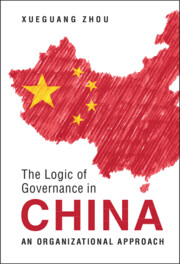Book contents
- The Logic of Governance in China
- The Logic of Governance in China
- Copyright page
- Contents
- Figures and Tables
- Preface
- Abbreviations
- 1 Introduction: The Logic of Governance in China
- Part I The Logic of Governance: Institutions and Mechanisms
- 2 The Chinese State and the Chinese Bureaucracy: A Weberian Lens
- 3 Modes of Governance in the Chinese Bureaucracy: A Control Rights Theory
- 4 Campaign-Style Mobilization as a Mechanism of Governance
- Part II The Logic of Governance and Government Behavior
- Part III The Logic of Governance and Chinese Society
- Glossary
- References
- Index
2 - The Chinese State and the Chinese Bureaucracy: A Weberian Lens
from Part I - The Logic of Governance: Institutions and Mechanisms
Published online by Cambridge University Press: 16 December 2022
- The Logic of Governance in China
- The Logic of Governance in China
- Copyright page
- Contents
- Figures and Tables
- Preface
- Abbreviations
- 1 Introduction: The Logic of Governance in China
- Part I The Logic of Governance: Institutions and Mechanisms
- 2 The Chinese State and the Chinese Bureaucracy: A Weberian Lens
- 3 Modes of Governance in the Chinese Bureaucracy: A Control Rights Theory
- 4 Campaign-Style Mobilization as a Mechanism of Governance
- Part II The Logic of Governance and Government Behavior
- Part III The Logic of Governance and Chinese Society
- Glossary
- References
- Index
Summary
Only bureaucracy has established the foundation for the administration of a rational law.
Max Weber (1946, p. 216)Cadres are a decisive factor, once the political line is determined …
Mao Zedong (1991, p. 526)- Type
- Chapter
- Information
- The Logic of Governance in ChinaAn Organizational Approach, pp. 31 - 52Publisher: Cambridge University PressPrint publication year: 2022



